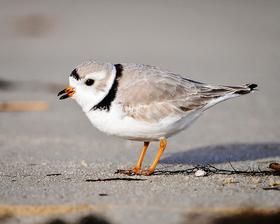By NAINA RAO
Capital News Service
LANSING — A new predator has emerged for piping plovers in the Great Lakes.
Snowy owls were recently seen eating plovers in several locations along the Great Lakes, including Sleeping Bear Dunes National Lakeshore in northwest Lower Michigan and Vermilion Point in the Upper Peninsula.
Piping plover are a critically endangered species. There were only 11 nesting pairs reported back in the mid-1980s. They have since expanded to 76 pairs, located all over the Great Lakes region.
The Great Lakes piping plover coordinator for U.S. Fish and Wildlife Service, Vince Cavalieri, said he wasn’t expecting a new predator.
“This is the first time that I’ve seen snowy owls this late into the season in these kind of numbers, and also it’s the first time we know that piping plovers were predated by snowy owls,” Cavalieri said.
He said that piping plovers typically don’t arrive in the Great Lakes until mid- to late-April – “right about when snowy owls are usually leaving to go back to the Arctic.”
The Fish and Wildlife Service talked about trapping the owls but that ended up not happening. “Most of the owls have left on their own,” Cavalieri said.
Earlier this year, Audubon reported on another emerging threat to the region’s piping plover population: the merlin, a threatened species of small falcons, has been recovering as well and often feeds on shorebirds such as piping plovers.
Naina Rao reports for Inetrlochen Public Radio.
